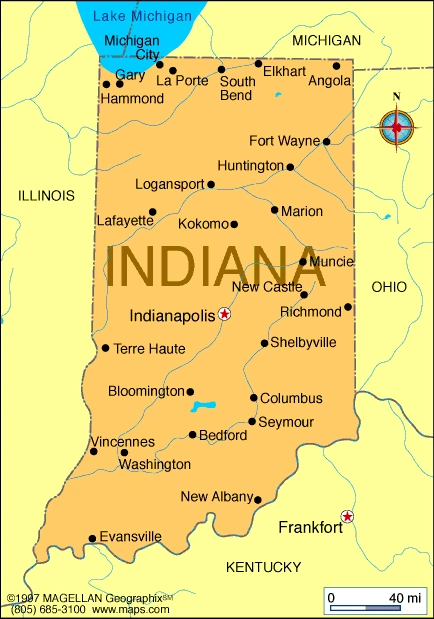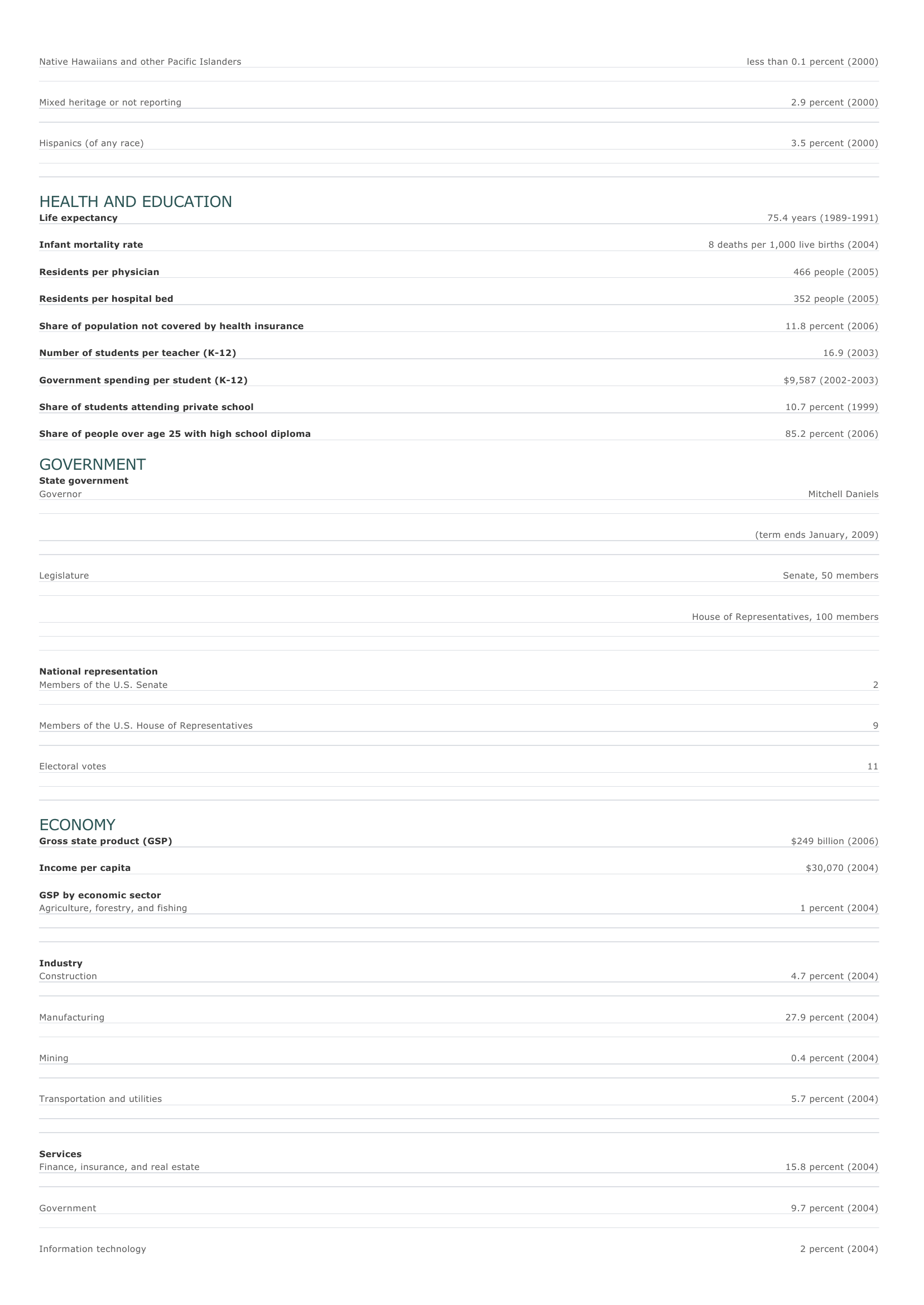Indiana - Facts and Figures.
Publié le 10/05/2013

Extrait du document


«
Native Hawaiians and other Pacific Islanders less than 0.1 percent (2000) Mixed heritage or not reporting 2.9 percent (2000) Hispanics (of any race) 3.5 percent (2000) HEALTH AND EDUCATIONLife expectancy 75.4 years (1989-1991) Infant mortality rate 8 deaths per 1,000 live births (2004) Residents per physician 466 people (2005) Residents per hospital bed 352 people (2005) Share of population not covered by health insurance 11.8 percent (2006) Number of students per teacher (K-12) 16.9 (2003) Government spending per student (K-12) $9,587 (2002-2003) Share of students attending private school 10.7 percent (1999) Share of people over age 25 with high school diploma 85.2 percent (2006) GOVERNMENTState governmentGovernor Mitchell Daniels (term ends January, 2009) Legislature Senate, 50 members House of Representatives, 100 members National representationMembers of the U.S.
Senate 2 Members of the U.S.
House of Representatives 9 Electoral votes 11 ECONOMYGross state product (GSP) $249 billion (2006) Income per capita $30,070 (2004) GSP by economic sectorAgriculture, forestry, and fishing 1 percent (2004) IndustryConstruction 4.7 percent (2004) Manufacturing 27.9 percent (2004) Mining 0.4 percent (2004) Transportation and utilities 5.7 percent (2004) ServicesFinance, insurance, and real estate 15.8 percent (2004) Government 9.7 percent (2004) Information technology 2 percent (2004).
»
↓↓↓ APERÇU DU DOCUMENT ↓↓↓
Liens utiles
- Wyoming - Facts and Figures.
- Wisconsin - Facts and Figures.
- Washington - Facts and Figures.
- West Virginia - Facts and Figures.
- Alberta - Facts and Figures.


